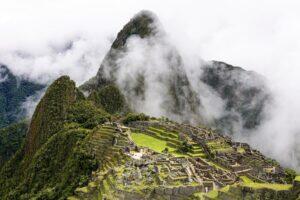Fodor's Expert Review La Catedral
Dominating the Plaza de Armas, the monumental Cathedral Basilica of the Assumption of the Virgin (or Cusco Cathedral) is one of Cusco's grandest buildings. Built in 1550 on the site of the palace of the Inca Wiracocha and using stones looted from the nearby Inca fortress of Sacsayhuamán, the cathedral is a perfect example of the imposition of the Catholic faith on the indigenous population. The grander the building, went the theory, the more impressive (and seductive) the faith. With soaring ceilings, baroque carvings, enormous oil paintings, and glittering gold-and-silver altars, the cathedral certainly seemed to achieve its aim.
Today, Cusco's Catedral is one of the town's star attractions, noted mainly for its amazing collection of colonial art that mixes Christian and non-Christian imagery. Entering the Catedral from the Sagrada Familia chapel, head to your right to the first nave, where you'll find the famous oil painting (reputed to be the oldest in Cusco) depicting the... READ MORE
Dominating the Plaza de Armas, the monumental Cathedral Basilica of the Assumption of the Virgin (or Cusco Cathedral) is one of Cusco's grandest buildings. Built in 1550 on the site of the palace of the Inca Wiracocha and using stones looted from the nearby Inca fortress of Sacsayhuamán, the cathedral is a perfect example of the imposition of the Catholic faith on the indigenous population. The grander the building, went the theory, the more impressive (and seductive) the faith. With soaring ceilings, baroque carvings, enormous oil paintings, and glittering gold-and-silver altars, the cathedral certainly seemed to achieve its aim.
Today, Cusco's Catedral is one of the town's star attractions, noted mainly for its amazing collection of colonial art that mixes Christian and non-Christian imagery. Entering the Catedral from the Sagrada Familia chapel, head to your right to the first nave, where you'll find the famous oil painting (reputed to be the oldest in Cusco) depicting the earthquake that rocked the town in 1650. Among the depictions of burning houses and people fleeing, you'll see a procession in the plaza. Legend has it that during the earthquake, the citizens removed a statue of Jesus on the cross from the Catedral and paraded it around the plaza—halting the quake in its tracks. This statue, now known as the Señor de los Temblores, or Lord of the Earthquakes, is Cusco's patron, and you'll find him depicted in many Cusqueñan paintings.
To see the famous statue, head across the Catedral to the other side, where in the nave and to the right of the passage connecting the Catedral to the adjoining Iglesia del Triumfo, you'll find El Señor himself. The dark color of his skin is often claimed to be a representation of the indigenous people of Cusco; actually, it's the effect of years of candle smoke on the native materials used in its fabrication.
Those interested in the crossover between indigenous and Catholic iconography will find lots to look at. Figures of pumas, the Inca representation of the Earth, are carved on the enormous main doors, and in the adjoining Iglesia del Triumfo you'll see an Andean Christ in one of the altars flanking the exit. No one should miss the spectacular painting of the Last Supper, by the indigenous artist Marcos Zapata, where you'll see the diners tucking into a delicious feast of viscacha (wild chinchilla) and chicha (a corn beverage)!
The cathedral's centerpieces are its massive, solid-silver altar, and the enormous 1659 María Angola bell, the largest in South America, which hangs in one of the towers and can be heard from miles away. Behind the main altar is the original wooden altar primitivo dedicated to St. Paul. The 64-seat cedar choir has rows of carved saints, popes, and bishops, all in stunning detail down to their delicately articulated hands. If you're interested in a more in-depth look, enlist the services of a guide—you'll find them right outside the Catedral. Agree on a price before you start; it will cost a minimum of S/30 per group. Alternatively, there is a free audio guide.
READ LESS




